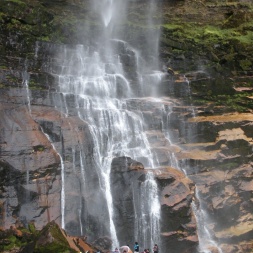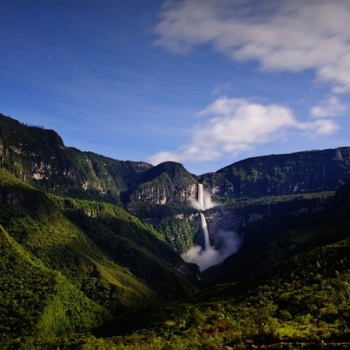Protection of Key Watershed Underway in Peru, Totaling 1,617,000 Acres of Rainforest
10/20/2014
 October 2014 | With the support of NCI’s team in Amazonas, the Regional Government of Amazonas has approved an ordinance protecting the Utcubamba River watershed’s environmental values, spanning 1,617,000 acres. Within this critical watershed, ten new protected areas are planned to encompass 535,000 acres, while another 1,082,000 acres will be designated for sustainable development uses such as organic coffee and cacao, which will enhance local economies while supporting conservation efforts.
October 2014 | With the support of NCI’s team in Amazonas, the Regional Government of Amazonas has approved an ordinance protecting the Utcubamba River watershed’s environmental values, spanning 1,617,000 acres. Within this critical watershed, ten new protected areas are planned to encompass 535,000 acres, while another 1,082,000 acres will be designated for sustainable development uses such as organic coffee and cacao, which will enhance local economies while supporting conservation efforts.
The Utcubamba River watershed is a high priority for conservation because of the many endemic and endangered species it hosts, including the Wooly Anteater, Spectacled Bear and Marvelous Spatuletail hummingbird. In addition to its significance for biodiversity and mitigating climate change, the watershed is home to 80,000 people, all of whom depend on its clean water for drinking and agriculture.
 The efforts of our NCI-Amazonas team have been integral to this process, including the expertise of two lawyers, one biologist and a geographer who developed the legal text for the ordinance and determined the highest priority ecosystems within the watershed. In the words of Mike McColm, Director of our Amazonas office,
The efforts of our NCI-Amazonas team have been integral to this process, including the expertise of two lawyers, one biologist and a geographer who developed the legal text for the ordinance and determined the highest priority ecosystems within the watershed. In the words of Mike McColm, Director of our Amazonas office,
“These protected areas will conserve key ecosystems – guaranteeing environmental services like clean water – and provide communities with the opportunity to create sustainable development projects that are in harmony with conservation.”
In Peru, environmental challenges such as illegal logging, oil exploitation and over-fishing have degraded important ecosystems, resulting in a loss of biodiversity as well as social problems such as water pollution. In 2012 alone, Peru lost nearly 400,000 acres of Amazon rainforest, and South America continues to face an annual deforestation rate of 2%. That’s why we are working alongside regional governments and local communities to protect key ecosystems for the people of Peru and for the health of the entire planet.


